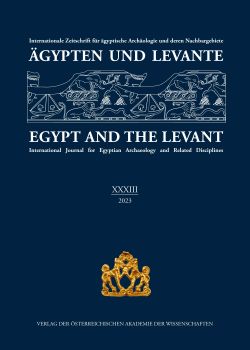
Ägypten und Levante 33, pp. 235-254, 2024/02/28
Internationale Zeitschrift für ägyptische Archäologie und deren Nachbargebiete
International Journal for Egyptian Archaeology and Related Disciplines
Alan Gardiner was the first to reconstruct and review the written sources regarding the so-called “Ways of Horus”, a chain of fortresses established in North Sinai during the New Kingdom. To this day, his 1920 article “The Ancient Military Road between Egypt and Palestine” is the stepping stone and the starting point for every discussion on the argument. The article’s enduring importance is connected not only to the fact that Gardiner convincingly connected the 12-forts description contained in Papyrus Anastasi I with the depiction present in the Karnak Reliefs of Seti I; and that he reconstructed the deteriorated (and deteriorating) reliefs on the base of copies made during the 19th-century. His 11-forts reconstruction of the reliefs has been used by virtually every scholar ever since. However, reconciling the discrepancies between the two documents, particularly regarding the number of forts, has proven to be an unsolvable problem. This article demonstrates that a twelfth fort – originally present in the Karnak Reliefs – went unnoticed by Gardiner. It shows that Ippolito Rosellini depicted it in a copy of the Reliefs made in 1829, and that he described it in his notes. It highlights that the University of Chicago’s Epigraphic Survey of the Reliefs found traces of the name of the fort’s accompanying well. It finally reassesses the subject of the so-called “Ways of Horus” and, by recognizing the existence of this “ forgotten fort”, supports Alan Gardiner’s century old argument that the description in Papyrus Anastasi I aligns with the depiction in the Karnak Reliefs.
Keywords: Ways of Horus; Karnak reliefs; Papyrus Anastasi I; North Sinai; Gardiner